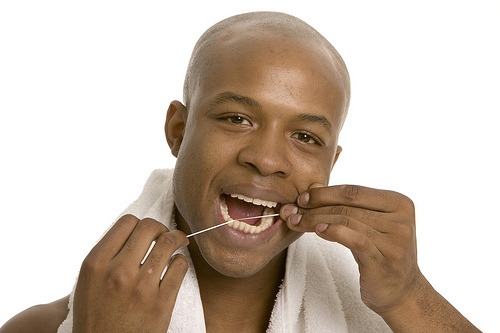Root Cavities
April 24th, 2024

When we don’t keep up with our dental hygiene, plaque buildup can result in three kinds of cavities. Pit and fissure cavities are found on the tops of molars, where food particles get stuck in the irregular surfaces. Smooth surface cavities are located on the smooth sides of teeth.
Wait. Top, all around the sides—what’s left for plaque to attack?
Our roots. The roots of our teeth are generally protected by their concealed position in the jaw. Sitting securely in alveolar bone, held firmly in place by connective tissue, with gum tissue snugly surrounding them, roots are generally not cavity prone.
But these cozy conditions can change. Due to gum disease, abrasive habits, or simply the passage of time, gums can recede and expose root surfaces. And this exposure can lead to root cavities.
If you look at a complete tooth, it looks like enamel is covering the entire tooth surface. In fact, enamel, the strongest substance in the body, only covers the visible part of the tooth, called the crown. The roots are covered by a substance called cementum, which is softer than enamel. And if enamel can’t stop decay, cementum is even more vulnerable when it’s exposed to plaque, bacteria, and acidic foods.
How do we protect our roots from decay? Protecting our gums is the first line of defense.
- Gum Disease
Receding gums caused by periodontitis can be treated by Dr. Kelly Peterson. Deep cleaning procedures such as scaling and root planing can remove accumulated plaque and tartar, and help gum tissue reattach to teeth. For serious recession, gum grafts can replace lost tissue.
Early treatment can prevent recession. If you notice any signs of early gum disease, including bleeding, swelling, tenderness, or persistent bad breath, it’s time for a visit to our Marysville, WA office.
- Gum Abrasion
It’s not just gum disease that can lead to gum recession. Some personal habits are hard on gums and teeth, and can leave roots exposed. If you bite your nails, grind your teeth, irritate your gums with oral piercings, you are at risk for gum recession. Talk to Dr. Kelly Peterson about preventing abrasive damage.
A surprising cause of receding gums? Over-vigorous brushing. Use a soft-bristled brush—and don’t use a heavy hand when brushing—to protect your delicate gum tissue.
- Aging
As we age, our gums recede. So it’s no wonder that older adults are especially at risk for root cavities. That’s why it’s very important to keep up with brushing (at least two minutes twice a day) and flossing (once a day, or more often if needed) to prevent the buildup of plaque and tartar.
And it’s more important than ever to schedule regular dental exams and cleanings. Dr. Kelly Peterson can help stop small problems from becoming major ones, and suggest brushing and flossing techniques, fluoride treatments, or other procedures to encourage gum and dental health.
If a cavity develops, no matter what kind, it should be treated as soon as possible. And time is especially important for a root cavity.
Because cementum is weaker than enamel, cavities can progress more quickly in roots. A cavity which has reached pulp tissue might require a root canal and a crown to restore tooth function. Serious decay could lead to extraction.
Don’t let root cavities undermine your dental health. If you notice any sign of gum disease or recession, it’s time for a visit to our Marysville, WA office. After all, even though they go unnoticed, strong roots are the foundation of a healthy, attractive, life-long smile.









 Website Powered by Sesame 24-7™
Website Powered by Sesame 24-7™